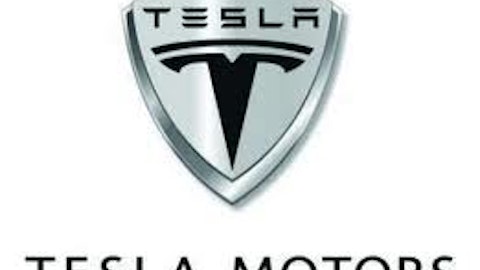
Chevrolet Volt. Photo credit: General Motors Company (NYSE:GM).
Few cars have taken more flak from media critics in recent years than General Motors Company (NYSE:GM)’ innovative green car, the Chevrolet Volt.
Of course, few of those critics are auto reviewers. Those reviewers, like most folks who try a Chevy Volt, tend to like the car. It’s a great product, one of GM’s best — and believe it or not, GM’s best are now as good as anybody’s. It’s comfortable, well made, and does what GM says it will.
I’ve talked to plenty of Volt owners, and every single one sings the car’s praises. That’s apparently typical: The Volt is tops among compact cars in J.D. Power’s APEAL customer-satisfaction survey.
In fact, the Volt has delivered on every one of General Motors Company (NYSE:GM)’s major goals for it. Every goal, that is, except one: the sales goal.
And that’s where the problems start.
Is the Volt really a big money-loser for GM?
Nobody disputes that the Volt hasn’t met the ambitious sales goals announced for it in more optimistic days. It didn’t come close to the company’s target of 45,000 U.S. sales last year, and it isn’t doing much better in 2013.
In fact, Tesla Motors Inc (NASDAQ:TSLA)‘ expensive electric sedan, the Model S, appears to have outsold the Volt in the first quarter, at least in North America.
That’s more ammo for partisan critics who contend that the Volt is a money-losing boondoggle that is somehow subsidized by taxpayers (never mind that — officially speaking, at least — General Motors Company (NYSE:GM) paid off its bailout ages ago) and should be killed off.
What’s holding up sales isn’t the car, it’s the price: With a list price of nearly $40,000, the Volt is expensive for a compact Chevy, even a high-tech one. The sticker shock turns off a lot of potential buyers before they can hear the case for the car.
But is it really a money-loser for GM?
Why the “GM loses X dollars for every Volt sold” argument is flawed
No automaker, including GM, will tell you how much it’s making (or not making) on any specific vehicle line. Critics doing flawed back-of-the-envelope calculations have contended that General Motors Company (NYSE:GM) must be losing tens of thousands of dollars on every Volt sold.
But retired GM product chief Bob Lutz, who drove the Volt’s development, has argued persuasively that the Volt is probably priced appropriately to cover its incremental costs.
In other words, each Volt sold probably pays for itself in terms of the parts and labor that went into that particular car. It probably also contributes a little toward paying down the big investment ($750 million, give or take) that GM made upfront to develop the model.


